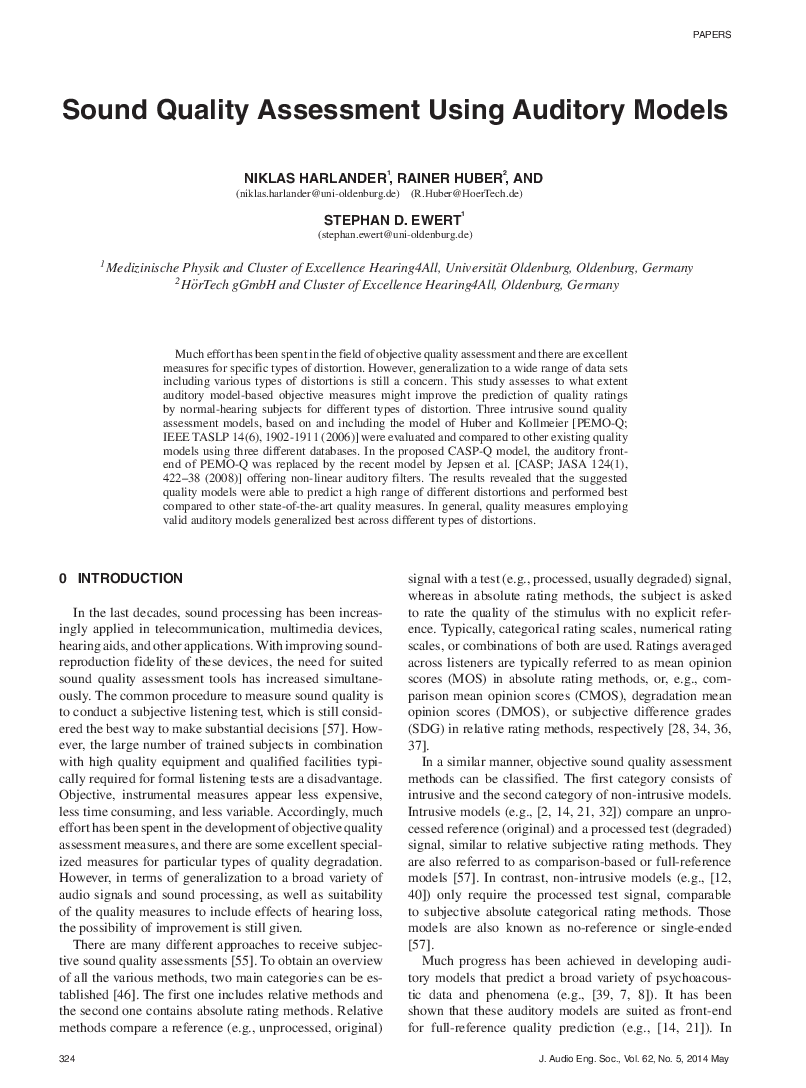Home / Publications / E-library page
You are currently logged in as an
Institutional Subscriber.
If you would like to logout,
please click on the button below.
Home / Publications / E-library page
Only AES members and Institutional Journal Subscribers can download
Although the common procedure for measuring sound quality is based on subjective listening tests, this approach is labor intensive, requiring a large number of trained subjects and specialized facilities. If a model-based approach could approximate subjective tests, quality measurement could be automated. This study examines the degree to which objective measures from auditory models might improve the prediction of quality ratings by normal-hearing subjects with different types of distortion. Using a wide variety of audio data, the authors compared two sound quality assessment models based on PEMO-Q and CASP and one extended version of PEMO-Q to state-of-the-art quality-assessment models. The results revealed that the suggested quality models were able to predict a high range of different distortions and performed best compared to other state-of-the-art quality measures. In general, quality measures employing valid auditory models generalized best across different kinds of distortions.
Author (s): Harlander, Niklas; Huber, Rainer; Ewert, Stephan D.
Affiliation:
Medizinische Physik and Cluster of Excellence Hearing4All, Universität Oldenburg, Oldenburg, Germany; HörTech gGmbH and Cluster of Excellence Hearing4All, Oldenburg, Germany
(See document for exact affiliation information.)
Publication Date:
2014-05-06
Import into BibTeX
Permalink: https://aes2.org/publications/elibrary-page/?id=17243
(438KB)
Click to purchase paper as a non-member or login as an AES member. If your company or school subscribes to the E-Library then switch to the institutional version. If you are not an AES member Join the AES. If you need to check your member status, login to the Member Portal.

Harlander, Niklas; Huber, Rainer; Ewert, Stephan D.; 2014; Sound Quality Assessment Using Auditory Models [PDF]; Medizinische Physik and Cluster of Excellence Hearing4All, Universität Oldenburg, Oldenburg, Germany; HörTech gGmbH and Cluster of Excellence Hearing4All, Oldenburg, Germany; Paper ; Available from: https://aes2.org/publications/elibrary-page/?id=17243
Harlander, Niklas; Huber, Rainer; Ewert, Stephan D.; Sound Quality Assessment Using Auditory Models [PDF]; Medizinische Physik and Cluster of Excellence Hearing4All, Universität Oldenburg, Oldenburg, Germany; HörTech gGmbH and Cluster of Excellence Hearing4All, Oldenburg, Germany; Paper ; 2014 Available: https://aes2.org/publications/elibrary-page/?id=17243